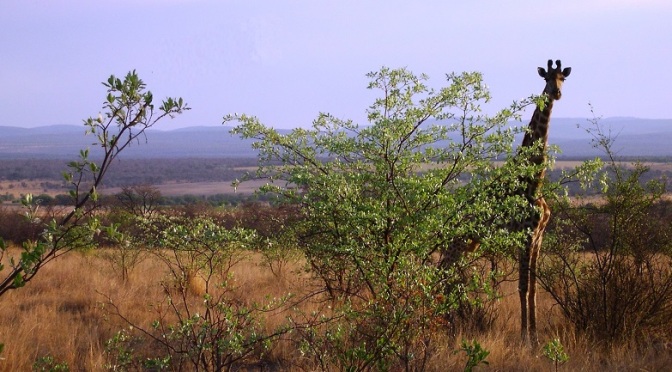Overview
Welcome to the Fourth edition of Shakati Bush Facts. In the article, we will be focusing on the Waterberg Biosphere. This article is part of a two part series. The first article will focus on the Waterberg Biosphere, and the second will focus on the climate, ecology and other aspects of the Biosphere.
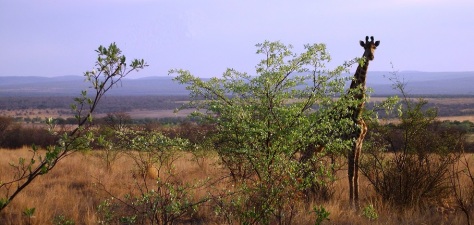
What is a Biosphere?
Biosphere reserves are areas comprising terrestrial, marine and coastal ecosystems. Each reserve promotes solutions reconciling the conservation of biodiversity with its sustainable use. Biosphere reserves are nominated by national governments, and remain under the sovereign jurisdiction of the states where they are located. Their status is internationally recognized. (http://www.unesco.org)
Biosphere reserves are ‘Science for Sustainability support sites’ – special places for testing interdisciplinary approaches to understanding and managing changes and interactions between social and ecological systems, including conflict prevention and management of biodiversity. (http://www.unesco.org)
Biosphere reserves have three interrelated zones that aim to fulfil three complementary and mutually reinforcing functions:
1. The core area(s) comprises a strictly protected ecosystem that contributes to the conservation of landscapes, ecosystems, species and genetic variation.
2. The buffer zone surrounds or adjoins the core areas, and is used for activities compatible with sound ecological practices that can reinforce scientific research, monitoring, training and education.
3. The transition area is the part of the reserve where the greatest activity is allowed, fostering economic and human development that is socio-culturally and ecologically sustainable
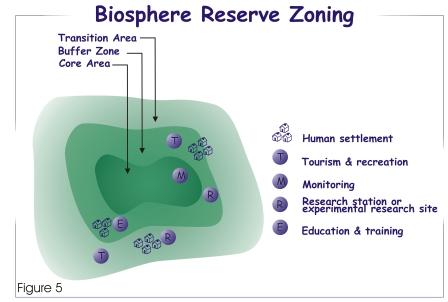
The Biosphere concept has sustainable development as one of its points of departure. The two ideas operate within the same conceptual framework, namely to promote socio-environmentally compatible living practices, thus it offers practical solutions to the many challenges facing landscape managers today.
Waterberg Biosphere
Waterberg Biosphere Reserve is situated within the Bushveld district in the Limpopo Province of South Africa. The Waterberg Biosphere Reserve was established in 2001, and consist of 414,571 hectares, where the core are is 114,571 hectares, buffer zone 150,000 hectares and the transition area 150,000 hectares. This is the approximate size of the Kruger national park. The Waterberg Biosphere Reserve concept will help a balance to be struck between the pressures of the tourist industry, the need to generate direct benefits to the local communities and the conservation of the natural assets.
The Waterberg Biosphere is home to approximately 77 000 people (1999) and contains a rich diversity in cultures and languages, these languages include Northern Sotho, Tswana, Tsonga, Afrikaans, Ndebele, Sotho, Xhosa, English, Venda, Zulu and Swati. Interesting fact: There are many San Rock Art areas identified in the Waterberg area, and is easily accessible to tourists. The Waterberg Biosphere primary sources of income are based on sustainability practices, for example tourism, game farming for eco-tourism, cattle rising and crop production.
Its altitude (metres above sea level), range between 830 to 2,085 meters above sea level. The Waterberg mountain range acts as a water reservoir for the northern parts of South Africa and consists of mountain ranges as well as a network of rivers, streams and lakes. The mountain range consist of 150 kilometres long arced mountain rains, which stretched from Thabazimbi in the West, Nylstroom in the centre to Potgietersrus in the east. The vegetation is dominated by different veld types, which consist of Tropical grasslands, savannas and bushveld.
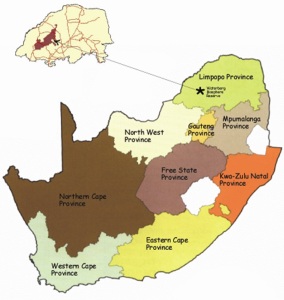 |
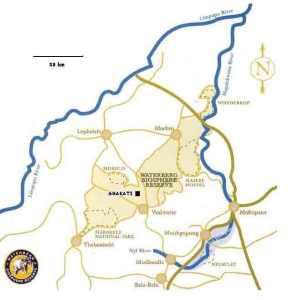 |
Major habitats and land cover types
There are four main drainage rivers within the area: the Lephalala, Mokolo, Matlabas and the Mogalakwena. These rivers, together with numerous lesser rivers and streams, constitute a major water catchment area for the Limpopo basin.(http://www.unesco.org/new/en/natural-sciences/environment/ecological-sciences/biosphere-reserves/africa/south-africa/waterberg/)
The Waterberg Biosphere Reserve represents a considerable area of the savannah biome of Southern Africa. The savannah biome, or wooded grasslands, has a rich biodiversity with more than 5,500 species of plants, 43% of which are endemic to Southern Africa. The area is characterized by seven different vegetation types: Central Sandy Bushveld, Limpopo Sweet Bushveld, Makhado Sweet Bushveld, Roodeberg Bushveld, Waterberg Mountain Bushveld, Waterberg-Magalies Summit Sourveld and Western Sandy Bushveld. (http://www.unesco.org/new/en/natural-sciences/environment/ecological-sciences/biosphere-reserves/africa/south-africa/waterberg/)
At least 18 threatened or scarce plants species, 11 bird species, 4 reptile species, 4 species of fish, one butterfly species and 18 mammals occur in the Waterberg Biosphere Reserve. All are deemed of the utmost importance for biodiversity conservation. Red Data List species include the white-backed night heron (Gorsachius leuconotus), the Cape vulture (Gyps coprotheres), the aardvark (Orycteropus afer), the brown hyaena (Parahyaena brunnea) and the critically endangered black rhinoceros (Diceros bicornis). (http://www.unesco.org/new/en/natural-sciences/environment/ecological-sciences/biosphere-reserves/africa/south-africa/waterberg/)
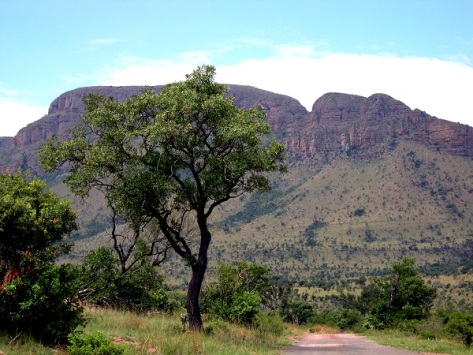
Socio- Economic Characteristics
The major economic activities for the region are tourism, hunting and some farming. There are approximately 26 rural villages inside the Waterberg Biosphere and is inhabited by an average of 1,800 people per village. The communities consist mainly of rural communities, farmers and game managers, the majority of which are Pedi-speaking people. There are several initiatives in place, which provide environmental education, and is facilitated via the environmental education centre.
Eco-Tourism and hunting is emerging more, and more as a viable sustainable economic practice for the region, and is slowly replacing agricultural farming.
Strong partnerships are being established between local businesses, local communities to promote the safeguarding of our previous natural resources.
Research
The Biosphere is as well established to promote research in the Waterberg area. The research includes
- Monitoring of the climate (precipitation, Weather),
- Ecology (Laphalala and Mokolo Rivers, grass monitoring, Tree and plant identification),
- Wildlife (Game, Carrying capacity, Roan antelope, leopard and black rhinoceros),
- Insects (Butterfly, insect types Stingless bees),
- Bird and fish studies, and
- Socio-Economic and history (Rock art, Cultural, history and archaeological studies, local skills and capacity building)
The primary aim of the research is to monitor and promote Sustainable utilization of natural resources
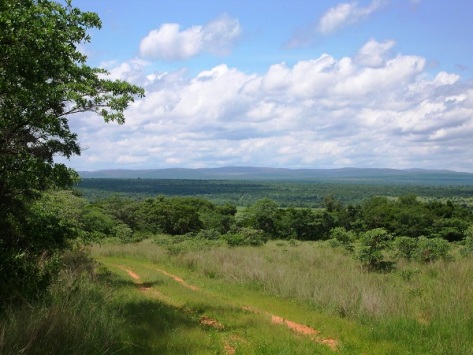
Conclusion
The Waterberg Biosphere and strikes an important balance between nature and Humans. This ensures that there is sustainability in wildlife and nature management, which ensures that the environment is cared for.
See you next time for the Shakati Bush Facts #5 – Waterberg Environment
References
https://en.wikipedia.org/wiki/Man_and_the_Biosphere_Programme
http://www.unesco.org/mabdb/br/brdir/directory/biores.asp?code=SAF+03&mode=all
http://www.scielo.org.za/scielo.php?script=sci_arttext&pid=S0038-23532013000500006
